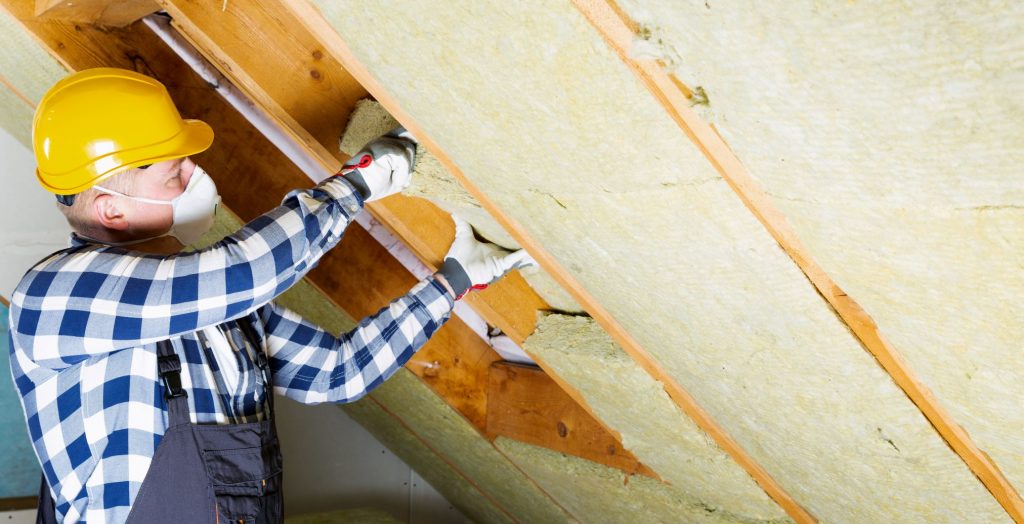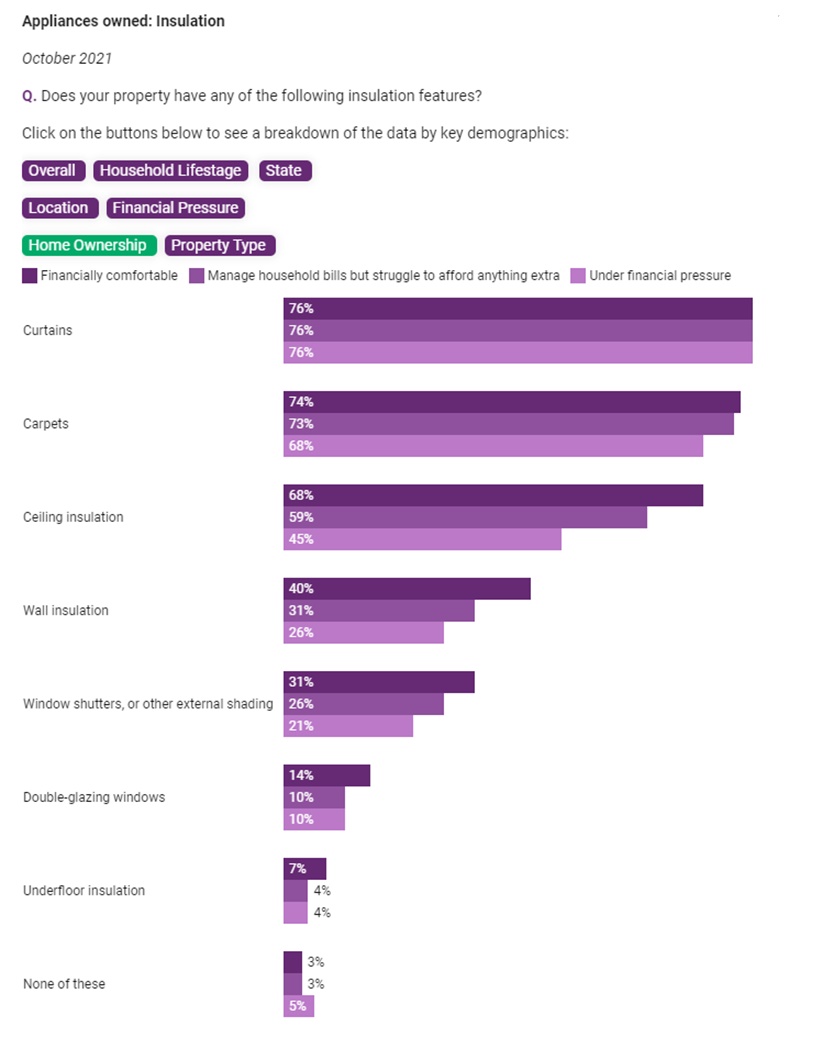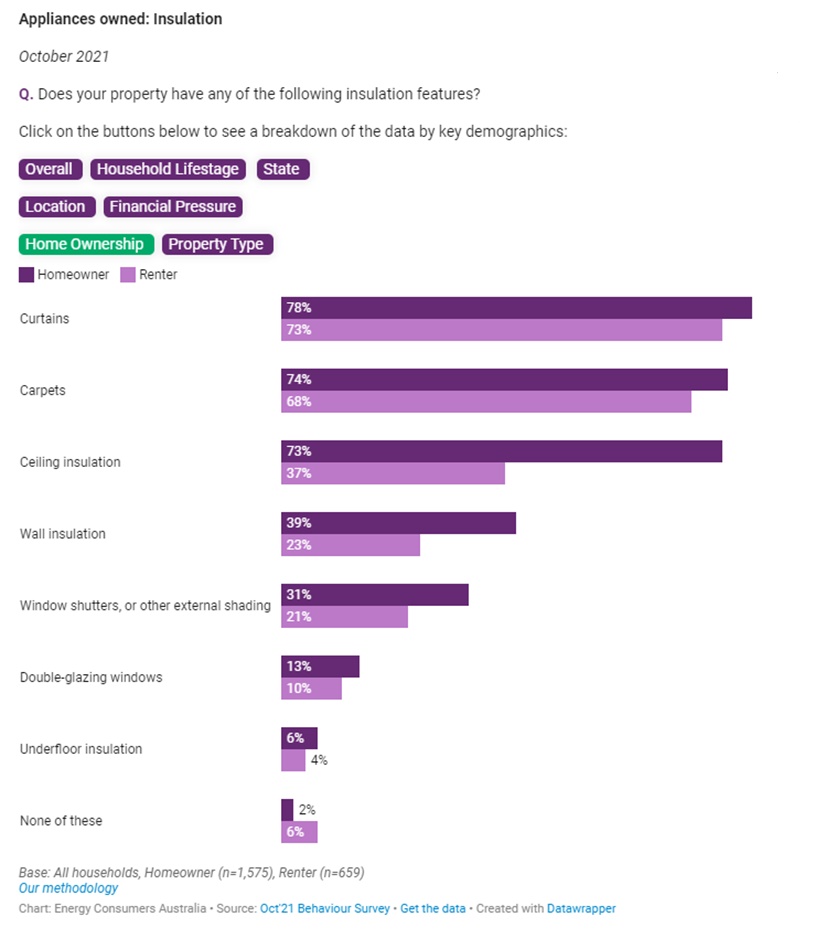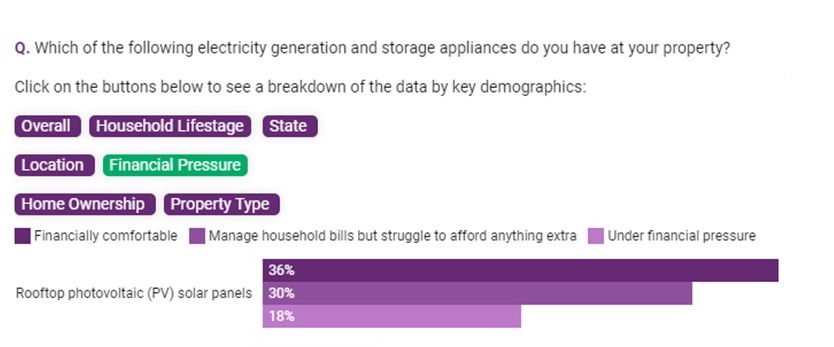Imagine you set out to create a new energy system – from scratch – to serve the interests of the 25.7 million energy consumers across Australia.
(Yes, that is actually the purpose of our system, to help people live their lives in the ways they need, want and expect to).
One thing you might take into account is that energy is an essential service – a right not a privilege – and that not all Australians will be equal in terms of the amount of money they can afford to pay for it.
You might, then, create a system where those who can pay a little more will help to support those who cannot. When, as part of our research, we ask Australians if they are happy to do this, they overwhelmingly tell us they are. And such logic is built into our energy system. It explains why people in big cities pay a little more for electricity to help cover the cost of long transmission lines and keep energy affordable for rural and remote consumers.
But there’s one big area where our system does not function this way. Perversely it is doing the opposite.
When it comes to the energy efficiency of our homes the evidence is clear. Energy efficient homes are better, healthier places to live and are far more affordable homes to run. Unfortunately, they are also a major fault-line between the haves and have-nots in our system.
We have long known this, but the results of our recent Energy Consumer Behaviour Survey lay bare just how large that divide is. They also explain why it is likely to continue increasing if we do not take action to make our system fairer and more inclusive.
Put simply, our most vulnerable people, including those who are financially insecure and many who are renting, have less access to virtually every form of energy efficiency tool and technology than those who are financially comfortable.
We have created a system – or allowed one to develop -- that ensures the people who can least afford it will be paying most for their energy bills.

The insulation divide
The Energy Consumer Behaviour Survey is a new research product from Energy Consumers Australia that tracks how Australians are behaving – what they actually do and plan to do – across a whole range of questions and issues in the energy sector.
When it comes to the section on energy efficiency measures, the survey delivers some disturbing insights.
Those who have self-selected as being under financial pressure report having the lowest amount of ceiling and wall insulation. We see 68% of Australians who consider themselves financially comfortable reporting that they have ceiling insulation, compared to just 45% of Australians living under financial pressure.
And 40% of those who are financially comfortable say they have wall insulation, compared to only 26% of those who are under financial pressure.

These gaps are even wider when we compare homeowners and renters, with 73% of homeowners telling us they have ceiling insulation, compared to just 37% of renters.
When it comes to wall insulation it is 39% of homeowners telling us they have it compared to 23% of renters.
Across the board, we see the same story with other forms of insulation, with renters less likely to have curtains, carpets, window shutters or external shading, double-glazed windows and underfloor insulation.

How much does this matter? Good insulation is far more than a nice-to-have or a reason to turn down the heater a degree or two. In a recent interview, our CEO, Lynne Gallagher, cited good insulation as the single most important thing households can do to reduce their emissions. We also know it makes for healthier homes free of mould and other allergens and a stable temperature that lessens the need for heating and cooling.
Managing temperatures
With less access to insulation and other energy efficiency measures, renters and those under financial pressure will likely pay more to heat and cool their homes.
The issue is not just how often households will need to turn on those appliances (which will be more often), the ECBS also found that renters were more likely to use portable heaters and coolers in comparison to homeowners. Such appliances generally have lower setup costs but are less efficient than alternatives, which contributes even more to higher energy bills for those least able to afford them. That $15 blow heater purchased at the big-box discount store might seem cheap when compared to an efficient electric heat pump. But the bills that stack up month after month during winter will tell a very different story.
This same result was replicated for those under financial pressure, who, when compared to financially comfortable, were more likely to have portable cooling. Not only are these groups using more heating and cooling to live comfortably, they are also using less energy efficient heating and cooling appliances to do so. The damage is doubled.
Who gets eclipsed by solar?
Making a home more energy efficient is not the only way that households can create a healthy living space and lessen their energy costs. Another way is by generating their own free renewable energy, via rooftop solar panels.
When we look at which Australians have rooftop solar on their homes, we see the same familiar divide play out. Homeowners have driven our booming uptake of this technology and 42% of those surveyed said they had solar panels on their roof. For renters, this figure was a mere 9%.
When we examine those who say they are financially comfortable, 36% said they have rooftop solar compared to just 18% for those under financial pressure.

Can we expect that gap to narrow over time? It doesn’t appear likely. When we look at intent to purchase solar in the next 12 months, we see it is double for those who are financially stable compared to those under financial pressure.
What will the future look like?
With many Australians benefiting from new technology and energy efficiency upgrades, renters and those living under financial pressure are getting left behind. It is this energy divide or energy inclusion gap which is only going to get bigger if we don’t start to address it.
So, what can we do, as a society and as an energy system, to start bridging this divide and making the substantial benefits of energy efficiency available to a wider range of Australians?
Energy Consumers Australia is campaigning for change across four key areas (we call these the Four R’s of energy efficiency).
- Retro-fitting: A campaign to retrofit the 8 million or so of our homes that have an average energy efficiency rating of 1.7 stars (compared to a new home, which is commonly at least 6 stars).
- Rental standards: Energy efficiency standards that require landlords to meet a minimum threshold so that the costs of energy inefficiency are not unfairly borne by tenants.
- Residential Building Code: A new version of this code is proposed and lifts the standard for new build homes from 6 to 7 stars. It’s important that this proposal becomes law.
- Reporting and disclosure: When consumers inspect a property either to buy or rent it is currently very difficult to get information about how energy efficient it is. This information is highly relevant to the decision to buy or rent that property and should be available. We support initiatives to create a voluntary scheme for such reporting and to move towards a nationally-accredited compulsory scheme.
If these changes matter to you, we'd love to hear about it. Drop us a message on our social channels or email us at info@energyconsumersaustralia.com.au
And please consider signing up for our newsletter mailing list. We'll be having much more to say on this issue as we plan a major campaign for 2022.
